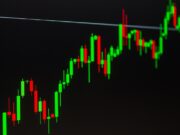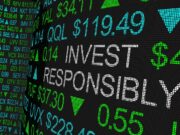Note – This article is intended for educational purposes only. It should not be construed as financial advice.
Dividend funds can be an excellent way to add a new dimension to your portfolio. By building an income stream, they can help you profit without selling assets and build a hedge against inflation. While typically not the path to highest growth, dividend index funds can be a strong form of portfolio diversification.
What Is a Dividend Index Fund?
A dividend index fund is an index fund built around stocks selected for their rate of dividend payments. This can be either a mutual fund or an exchange traded fund (ETF). To understand this we need to first understand two core concepts:
What Are Dividends?
Several forms of investments can return payments to their owners. Bonds, for example, often pay their interest at regular intervals in the form of “coupon payments.” These types of income-generating investments are often highly prized for the fact that you can profit off of them without having to sell the underlying asset.
With stocks, income comes in the form of dividend payments. A dividend is when a company pays some of its profits back to its shareholders rather than reinvesting in the firm or holding onto the cash. These can happen at either regular, planned intervals or intermittently based on the decisions of the company’s leadership. Stock holders will receive payments based on the size of the dividend per share and the number of shares they hold.
Often dividend payments will differ based on the class of stock you hold. Class A stock might receive dividends on a certain schedule, if at all, while Class C stocks might receive a guaranteed rate of return.
What Are Index Funds?
An index fund is an investment based on a collection of assets, such as stocks, bonds and commodities. The fund’s value is the sum value of its holdings, which fluctuate based on the value of each individual asset in the fund’s portfolio. For example, a fund might hold 10 shares of Company A worth $20 apiece and 100 shares of Company B worth $5 apiece. The total value of the fund would be $700 (the total value of all the shares it holds combined).
Funds are then broken down into shares of ownership much like companies will sell individual shares of themselves. Someone who owns shares in a fund owns a piece of that fund’s total portfolio, and the value of that share is based on the total value of the fund divided across the number of shares it has issued.
Many funds will build themselves around specific concepts, including a category of funds known as “index funds.” This means that they have built themselves around a specific benchmark such as the S&P 500 or the Dow Jones Industrial Average. The fund is “indexed,” meaning that the managers will try to ensure that it grows and declines in line with the value of that benchmark.
For most investors, funds come in two types. Mutual funds are actively managed funds, meaning that a manager selects their assets, with relatively low liquidity that you typically purchase through a broker. Exchange traded funds are generally passively managed, meaning that their assets are chosen according to a formula, which can be bought and sold on the open market like a stock.
What Are Dividend Index Funds?
A dividend index fund is a fund indexed to stocks on the basis of their dividend payments. Typically, a fund like this will organize itself around dividend yields, indexing itself to assets that pay a certain percent of return on an annual basis. Other funds might organize themselves by payment rate, seeking assets that pay out dividends at a quarterly or monthly rate.
It is important to distinguish a dividend index fund from a fund which pays dividends. It is not uncommon for mutual funds or ETFs to pay dividends to their shareholders when the fund makes a profit off its assets. Not every fund does this, but many do. These funds are not indexed to dividend-paying stocks, they simply have sold some of their holdings and returned the profits to shareholders rather than reinvesting them.
A dividend index fund does pay dividends to its shareholders, however it does so on a planned basis. This is a fund which specifically seeks out assets for their income generating potential.
Examples of Dividend Index Funds
When looking for a dividend indexed fund, the best first step is often to speak with a financial adviser about your specific needs. Dividends can create several new opportunities for you as an investor, and it’s important to identify what you’d like to do with this income stream once you have secured it. Identifying your needs will help you figure out exactly what kind of fund you’d like to invest in.
Examples of funds you can consider include:
High Dividend Funds
Many investors might be drawn to a fund based purely on its rate of return. More than anything else, what you would like is to maximize the income that your investment throws off. Common examples of this type of fund are the Vanguard High Dividend Yield Fund (VHDYX) and the Vanguard High Dividend Yield Fund Admiral Shares Index (VHYAX). Both of these funds are indexed to companies that pay consistently high dividends on an annual basis, seeking to maximize the total value of their returns.
Growth Targeted Funds
Other investors might be looking to invest in the long-haul. They want a fund that will increase their returns, hoping for an investment that will pay off more tomorrow than it does today. In that case you should look for funds like those linked to the S&P 500 Dividend Aristocrats Index, an index built around companies which have increased their dividends every year for at least 25 consecutive years.
Rate of Payment
Your priority might, instead, be rate of payment. You would like to take your money out of this fund as often as possible and move it into other opportunities. This is not an uncommon position to take in the market, and it would allow you to use this index fund as a source for future investments. In that case you might consider funds like the Vanguard Total Bond Market ETF (BND – Get Report) or the SPDR Preferred Stock Fund (PSK – Get Report) .
Costs
Or perhaps you just want to minimize costs. Fund management fees can take a significant bite out of your profits, so trying to cut them down is often an overlooked but essential part of smart investing. Funds like the Schwab U.S. Dividend Equity (SCHD – Get Report) or the Global X U.S. Preferred ETF (PFFD – Get Report) are good ways to make sure your money keeps working for you, not the asset manager.
It’s never too late – or too early – to plan and invest for the retirement you deserve. Get more information and a free trial subscription to TheStreet’s Retirement Daily to learn more about saving for and living in retirement. Got questions about money, retirement and/or investments? Email Robert.Powell@TheStreet.com.
Click here to see the full story








